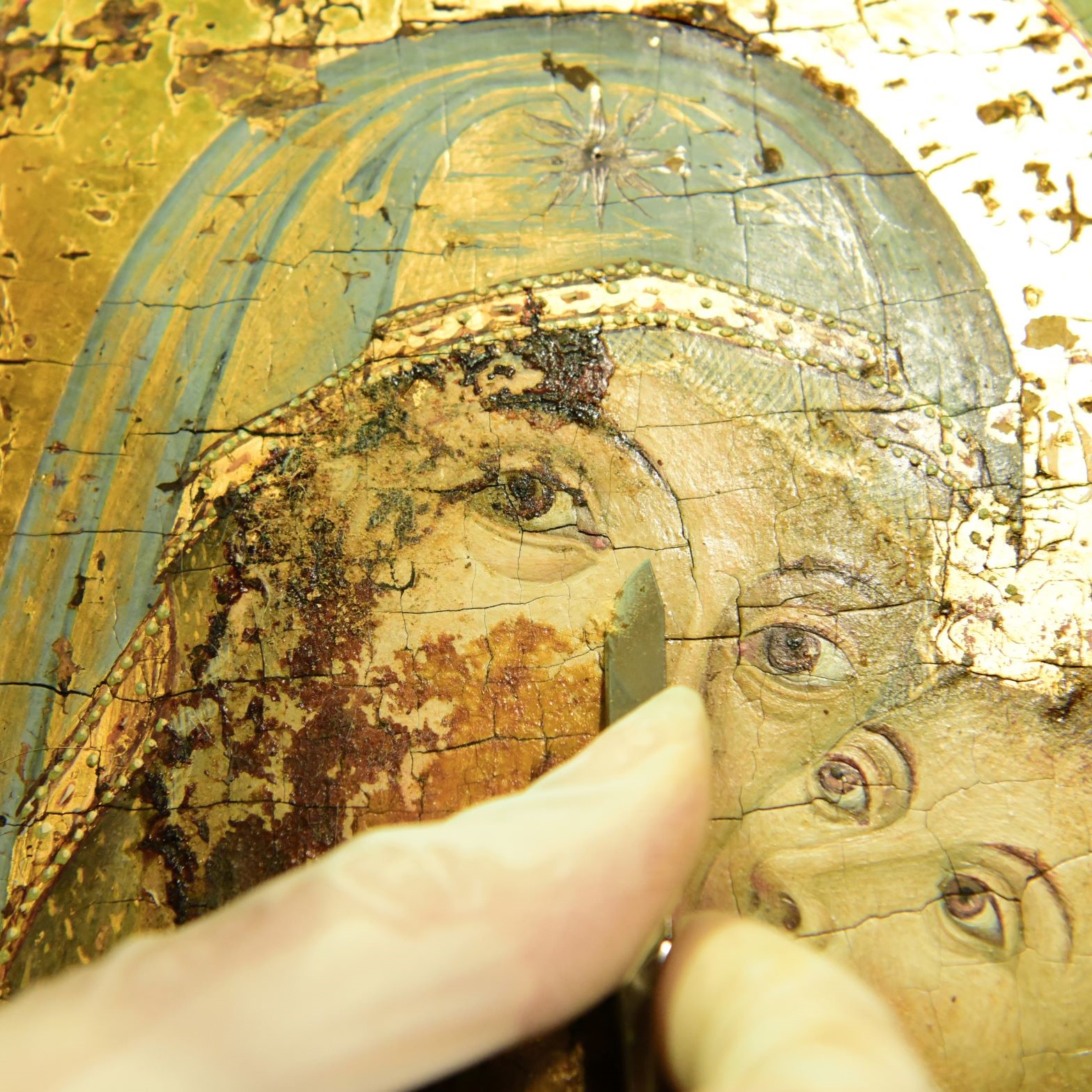BY VENIZELOS G. GAVRILAKIS | Senior Expert Artworks Conservator & Restorer
Embarking on the fascinating journey into the intricate realm of art conservation and restoration, one cannot overlook the captivating real-life stories that underscore the significance of this unique blend of technical expertise, artistic sensibility, and profound respect for cultural heritage. In this dynamic field, where the preservation, repair, and safeguarding of historical artworks become paramount, these tales illuminate the enduring legacy and challenges faced by those dedicated to this noble pursuit.
Consider the renowned case of the restoration of Leonardo da Vinci’s masterpiece, “The Last Supper.” This iconic fresco, located in Milan, underwent a meticulous restoration process to rescue it from the ravages of time and neglect. The skilled conservators delicately removed layers of grime and previous misguided restoration attempts, revealing the original brilliance and nuances of da Vinci’s masterpiece. This intricate endeavor not only showcased the technical prowess required but also underscored the responsibility of preserving a priceless cultural treasure for future generations.
In the world of sculpture restoration, the story of the Acropolis Museum in Athens provides a compelling narrative. The museum’s meticulous restoration of the Caryatids, the famous female statues that supported the Erechtheion temple, involved a delicate dance between art and science. The challenge was not only to repair the damages inflicted by centuries of exposure but also to recreate missing elements with precision. This narrative highlights the multidisciplinary approach required in the restoration of sculptures, emphasizing the intersection of artistry and scientific expertise.
Ethical considerations are woven into the fabric of art conservation, and the case of the “Botched Ecce Homo” fresco in Spain serves as a poignant reminder. The well-intentioned but misguided attempt to restore a deteriorating fresco of Jesus by an amateur artist led to unintended consequences. The restoration, or rather the misinterpretation of it, gained international attention. This incident underscores the importance of ethical practices, careful decision-making, and the need for professional expertise in the delicate art of restoration.
Staying attuned to advancements in conservation and restoration science is vital, as exemplified by the innovative use of 3D printing in recreating missing elements of damaged sculptures. This technological leap, showcased in the restoration of ancient artifacts, demonstrates how the marriage of traditional methods with cutting-edge technology can elevate the precision and efficacy of the restoration process.
As professionals continue to navigate this captivating field, they draw inspiration from these real-life stories, emphasizing the delicate balance of scientific proficiency, artistic appreciation, and the profound responsibility inherent in safeguarding artworks. The ongoing dialogue between the past and present, enriched by these narratives, ensures that the beauty and significance of artworks endure through time.
About the author
Venizelos G. Gavrilakis is a highly esteemed senior expert in the art conservation and restoration of Byzantine icons, historical paintings, artworks, and antiquities, renowned worldwide for his exceptional expertise. With a strong academic background, Venizelos graduated from a Ministry-certified conservation and restoration faculty in Greece, specializing in the conservation and restoration of artwork and antiquities. He further honed his skills through dedicated studies in paintings restoration and conservation at the prestigious Conservation Fine Art Faculty of Palazzo Spinelli in Florence, Italy. Since 1994, Mr. Gavrilakis has served as a senior expert art conservator and restorer, undertaking numerous noteworthy projects across the globe.
His remarkable career includes managing director positions at conservation laboratories in renowned institutions, collaborations with galleries and private collectors. He is an art-writer and contributor to The World Art News and others. Mr. Gavrilakis is a member of KMKD Kültürel Mirası Koruma Derneği (Association for the Protection of Cultural Heritage) as far as also member of AIC, IIC, ICON, ICA and other heritage culture associations. He is the owner and president of VENIS STUDIOS, a leading art conservation and restoration company headquartered in Istanbul, Turkey. The studio is dedicated to delivering exceptional services worldwide, combining the science and art of conservation and restoration, ensuring the art preservation of historical artworks and monuments at the highest level of craftsmanship.
Also Read
THE ART DOCTOR – Exclusive Interview with Senior Master Conservator & Restorer Venizelos G. Gavrilakis
The World Art News (WAN) is not liable for the content of this publication. All statements and views expressed herein are opinions only. Act at your own risk. No part of this publication may be reproduced without written permission. © The World Art News
Categories: Artifacts & Archeology, Europe, Fine Art, How-To, Middle East, Museums, Opinion, Restoration, Sculpture
